Издателство |
| :. Издателство
LiterNet |
Медии |
| :. Електронно списание LiterNet |
| :. Електронно списание БЕЛ |
| :. Културни
новини |
Каталози |
| :. По
дати : Март |
| :. Електронни книги |
| :. Раздели / Рубрики |
| :. Автори |
| :. Критика за авторите |
Книжарници |
| :. Книжен
пазар |
| :. Книгосвят: сравни цени |
Ресурси |
| :. Каталог за култура |
| :. Артзона |
| :. Писмена реч |
За
нас |
| :. Всичко за LiterNet |
SPIRITUAL STRUCTURES IN THE NETHERLANDISH BLOCKBOOK
Canticum canticorum, ca. 1465
Todor T. Petev
The subject of this paper is a blockbook Canticum canticorum printed in the Northern Netherlands in ca. 14651. The blockbook is an early print book in which usually both text and images are printed from a single block of wood. The Canticum is printed from sixteen blocks on eight sheets on one side of the paper only. It contains in total thirty-two subjects - each opening of the book containing four oblong compositions, two on each page.

Fig. 1. Canticum canticorum, blockbook, ca.1465, fol. 1v.-2r.
Though acknowledged as one of the finest examples the Canticum blockbook remains one of the least studied. The preserved twenty-nine complete or fragmentary copies of its two editions have no clear records of their early provenance and we can only speculate about their early users. Watermarks, technical and stylistic analysis of its imagery give only a general idea about the place where it was produced. Its subject is considered to be a series of allegorical representations of the relationship between Mary or Ecclesia and Christ drawn on the medieval exegetical tradition of the Old Testament Book of the Song of Songs. Such interpretation is supported not only by the iconography of the depicted scenes but also by a Middle Dutch xylographic inscription added in the second state of the first edition here given in English: "This is the omen of Maria, the Mother of God, which is called in Latin the Canticum" ("Dit is die voorsienicheit v mari der mod' godes en is gehet in lat cantice.").
Since the blockbook has no text, besides the extended Latin passages from the Song of Songs, inscribed in scrolls, I will focus on its pictorial program. My purpose in this paper is to identify some of the visual traditions the blockbook derives from and to suggest some of the ideas it elaborated and the ways it communicated them. Pertinent questions regarding links with contemporaneous texts and images interpreting the text of the Song of Songs will be left for another study.
My argument is that the four scenes of each opening of the book enter in a variety of visual relationships with each other. I will hypothesize that the scenes were neither conceived as separate units nor as a part of a linear narrative but that they form thematic clusters. The internal logic of the scenes would allow us recognize certain recurrent patterns in their arrangement and their mutual links. The most important conclusion of the study is that the format, organization, and subtle visual cues in the scenes demanded extraordinarily active, highly literate and visually sophisticated responses from the historical viewer.

Fig. 2. Bible moralisée, ca. 1230s-1240s, fol. 67v. Paris, Bibliothèque National. ms. lat. 11560
The format of presentation of the Canticum scenes in sets of four is rooted in an old tradition of exegetical books of didactic nature. Among the earliest examples is the Moralized Bible, a unique type of biblical manuscript conceived in the early thirteenth century in the court circles of France2. The Moralized Bible offered the most extensive and systematic visual commentary on the Biblical Scriptures in the Middle Ages3. It employed a highly peculiar format, compared sometimes to stained glass. Each folio size page is divided into two columns, each of them with four illuminated medallions accompanied with short texts in the margins. The order of biblical subjects in the Paris Moralized Bible follows the conventions of reading from left to right and then from top to bottom. Subjects are arranged in pairs where the first medallion illustrates a biblical passage followed by a commentary illustration in the form of an allegorical or moralizing event. Thus, each column contains four events, two of which are related in a narrative order and the other two providing an allegorical commentary. Besides the strict sequence in the event/commentary pairs, scholars have observed visual and thematic parallels among images between medallions of different columns or even of different pages. While retaining the matrix of four sequential biblical events per page and each of them followed by visual commentaries, a different kind of reading, based on visual and thematic parallels allowed the viewer/reader to transcend the linear narrative order and seek attentive links. Given that the multi-volume Moralized Bible manuscripts often contain over 5000 illustrations, one can appreciate the vast potential of these books to inspire typological reflection and to stimulate devout imagination. As we shall see later, this tradition of visual interpretation lies at the core of the Canticum blockbook design.
The peculiar visual format of the Canticum is related also to a more humble type of manuscripts of the so-called Biblia pauperum4. Like the Moralized Bible, those manuscripts also emerged in the thirteenth century. Scholars have traced their origins to the Benedictine or Augustinian monastic houses in South Germany or Austria. The book offered an abbreviated pictorial cycle on the life of Christ, set against corresponding events from the Old Testament, called ‘types.’ A mid fourteenth-century Biblia pauperum manuscript kept in Vienna is a good example of this earlier type where carefully arranged images in pen and ink of a rather modest quality. Here the Presentation of Christ to the Temple, depicted in the bottom left scene on folios 3v.-4r., is juxtaposed to three Old Testament prefigurations, each identified by an inscription. The manuscript consists of twenty-seven typological scenes, in which the pictorial layout and the dominant role of the images over the text resemble closely those in the Canticum blockbook. The two examples provided here, the Moralized Bible and the Biblia pauperum clearly suggest that the conception of the Canticum blockbook was rooted in an erudite thirteenth-century didactic tradition, which invented a new structural concept of the page in order to accommodate the changing needs of learned aristocratic and monastic communities in the processes of scriptural interpretation and personal edification.

Fig. 3. Biblia pauperum, shortly after 1358, fol. 3v.-4r. Vienna, Nationalbibliothek, cod. 370
Indeed, scholars have noted that towards the middle of the fifteenth century the spiritual revival associated with religious movements, such as the Devotio moderna, turned to a variety of thirteenth-century books of moral and spiritual guidance, which utilized new visual strategies to instruct the viewer/reader. This process coincided with the invention of the printing press and numerous experiments with pictorial formats, often merging the manuscript tradition with elements of the emerging print culture. Blockbooks, such as the Biblia pauperum, the Canticum canticorum, and the Speculum humanae salvationis, were part of this process of spiritual revival and technical experimentation. All three of them belong to the same group of North Netherlandish blockbooks produced between the 1450s and 1470s. Significantly enough, the last one, the Speculum is also a typologically conceived book5. It’s images are arranged at the top of four text columns juxtaposing a New Testament event, in this case the Flagellation of Christ, the first scene on the left, with three Old Testament prefigurations.
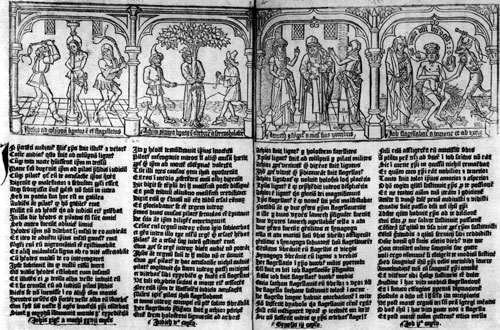
Fig. 4. Speculum humanae salvationis, blockbook, early 1470s, chapter XX
Whereas the Speculum and the Biblia pauperum emerged from well-established manuscript traditions centered around a series of events from the life of Christ, the subject Canticum - the love exchange between the bride and the groom of the Biblical Song of Songs - is rarely treated in pictorial sequences. While it appropriated the structural format of earlier Biblia pauperum manuscripts, the Canticum blockbook had to invent its own typological system to accommodate the scenes from the Song of Songs. Here we witness an apparent paradox - one of the most widely read and interpreted texts of the High and Late Middle Ages, the Song of Songs, did not establish an elaborate pictorial tradition. Perhaps its highly inflected, non-linear narrative had something to do with that. One of the few exceptions is the Moralized Bible manuscript tradition. The Paris copy, for example, contains full twenty-six folios treating pictorially the relationship between the bride and the groom6. The strong compositional, iconographic, and stylistic parallels between the scenes of the Moralized Bible and the Canticum blockbook would be a fruitful topic for a future study. The important point to note here is that both in its new conception of the page and in the typological context of display of the scenes from the Song of Songs the Moralized Bible is the main and, perhaps, the only manuscript tradition preceding the Canticum blockbook.
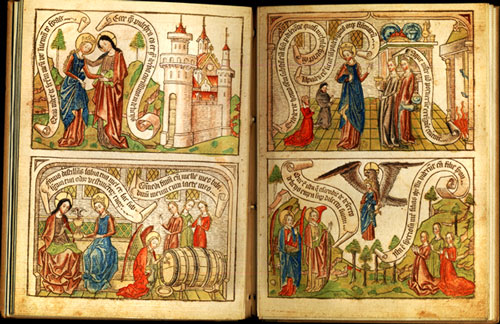
Fig. 5. Canticum canticorum, blockbook, ca.1465, fol. 9v.-10r.
Here shall consider some examples from the blockbook in which the format, the juxtapositions of scenes, and the visual elements within the images reveal a mechanism by which the illustrations evoked meaning for the viewer. On folio 9v. one can easily discern some thematic correspondence between the two scenes, which depict a sacramental union between the sponsa and Christ. The upper scene presents a meeting in anticipation of the kiss, which in medieval exegesis, among other things, became an allegory for the experience of the mystery of the Eucharist7. Bellow it is depicted the sacramental consummation of the meeting presented in interior setting. Here the bride is handed a chalice with the Holy Ghost hovering above it. The scenes on the facing folio 10r. elaborate upon a different theme. The text breaks the dialogic exchange between the lovers and instead, presents a passionate praise on love as announced in the first scroll on the top right: "Its flames are flames of fire, a most vehement flame," (Can. 8,6). The change in the text is matched here with a change in the pictorial mode.
The upper image on folio 10r. depicts allegorically the instruction in spiritual love of two contemporary figures of a nun and a monk, kneeling in prayer. These figures, in fact, are the only clues to the blockbook’s intended users. The subject of the lower scene is quite different in character. The inscribed laudatory text testifies to the pious bewilderment and admiration of the adoring figures: "Who is this that cometh up, from the desert, flowing with delights, leaning upon her beloved?" (Can. 8,5), exclaim the two angels on the left. "She is beautiful (among the daughters of Jerusalem), the daughters of Syon have seen her" (Can. 2,13), respond the three maidens on the right. Here, the central image of the bride is evocative of a visionary experience. She is elevated in the sky and held by a large eagle with a cruciform halo. Significantly, the differentiation in scale, like in the scene above, distinguishes the realm of the worshippers from the object of their adoration. In the upper scene the larger scale and position of the bride in the foreground, place her in the intermediary space between the two praying figures and the viewer. In the lower scene she appears diminished as a distant vision and it is the utterances of the adoring angels and maidens which guide the viewer to her.
The latter image adds yet another layer of meaning by making a clear evocation of the traditional depiction of the Assumption of the Virgin. The lack of narrative content of this scene and its symmetrical hieratic composition distinguish it even further from the images on the facing folio 9v. on the left. At the same time, however, as a theophanic manifestation and a fulfillment of prayers and longing, the scene completes the sequence which began with the dialogue of yearning in the first scene on the left and continued with the sacramental union in the scene bellow it, and then, on a different level, was anticipated by the bride's instruction in spiritual love in the upper scene on folio 10r.
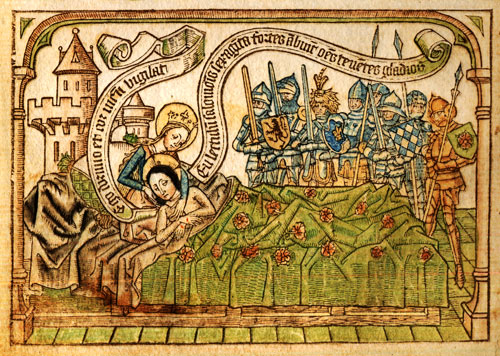
Fig. 6. Canticum canticorum, blockbook, ca.1465, fol. 15v, detail
Throughout the whole pictorial cycle of the blockbook we have visual allusions to the liturgy and the sacraments or to common places from exegetical treatises and sermons. To be able to recognize such visual signs and interpret them in relation to each other the intended fifteenth-century viewer must have had a substantial range of knowledge. For the visual language of the Canticum blockbook does not present simply a repository of visual cues. It suggests fluency of relationships among the images which, to a much higher degree than in the Speculum humanae salvationis and the Biblia pauperum,demands a sophisticated visual sensitivity and active role of the historical viewer as interpreter. Scenes like the one at the bottom of folio 15v. would have brought a conscious allusion to contemporaneous devotional images like the mid fourteenth-century Lamentation of the Dead Christ by the so-called Master of the Hohenfurth Altar.
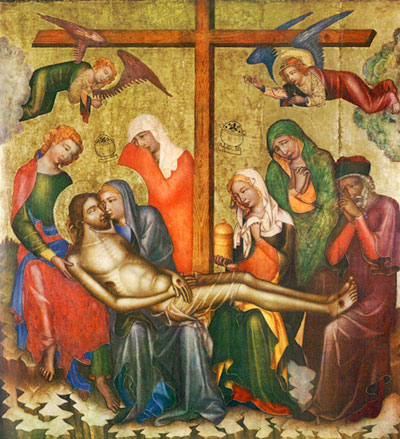
Fig. 7. The Lamentation of Christ, The Hohenfurther Altar, tempera on panel, 1346-56. Národní Galerie, Prague
Furthermore, the visual complexity of the scenes in the blockbook would indicate an advanced ability to relate them in a number of different ways. For example, the text in the scenes on folios 11v. and 12r. does not imply narrative continuity and in many ways each of them is treated as a separate subject. At a closer look, however, one will discover a number of visual cues, which suggest several possible relationships among them. Thus, for instance, we will observe an apparent narrative continuity of the upper tier-scenes, in which we have the groom calling upon the bride in the upper image of folio 11v. and eventually, their meeting on the upper scene of folio 12r. Most strikingly, the compositional inversion of the architectural structure and landscape in the two scenes on folio 11v. would have called attention to the symbolic transformation of the beloved one into the crucified one. In a similar way, the intimate outdoor meeting on folio 12r. becomes a hieratic display of the crucifix in the interior scene below. On the other hand, the two lower tier scenes share the crucifix as a common theme. There is no doubt that such inflections of the visual language were consciously conceived. Moreover, I consider them to be crucial to the function of the book as a devise for a meditative devotion.
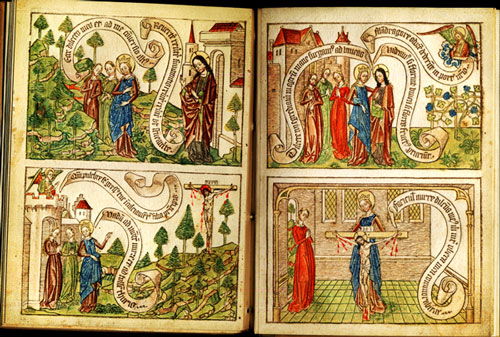
Fig. 8. Canticum canticorum, blockbook, ca.1465, fol. 11v.-12r.
To appreciate the uniqueness of the Canticum blockbook,we have to suspend our expectations to see its visual narrative as a linear progression of events in time, in which past and future are firmly anchored and distinguished from the present. Instead we can search in the story of the bride and the groom, as many medieval theologians did, a narrative of the divine scheme of sacrifice and redemption, in which human and divine histories are intricately interwoven. Here the habit of seeking for "signs," which would bring recollection of things past or evoke things in the Redemptive future constituted a fundamental direction in medieval thought8. How pervasive such mode of thought in the Middle Ages was can be deduced from books, like the Moralized Bible, and the numerous didactic blockbooks, like the Biblia pauperum or the Speculum humanae salvationis. Those books elaborated unique formats and pictorial strategies to allow images become vehicles of meaning9. Further study of such visual devises will provide rich information about the spiritual vision in the Late Middle Ages.
What makes the Canticum blockbook exceptional in this tradition is the fact that it not only provides a new sequence to accommodate the scenes from the Song of Songs, but also invents richly imaginative visual cues, which interweave in multiple ways different scenes. The relationships among its images remain flexible and visual interpretation remains the key tool for disclosing of its meaning. This made the blockbook an extremely dense and resonant meditational devise, which could be used time and again in the course of one's spiritual ascent.
NOTES
1. This paper was first delivered in 1996 at the seminar on Northern Renaissance Art conducted by Prof. James Marrow at Princeton University. He suggested the blockbook as a topic for study and throughout the course of my study provided inspiration, resourcefulness and encouragement. An extended version of it was published as "Typology and Format in the Netherlandish Blockbook Canticum canticorum, ca. 1465." Visual Resources, vol. 13, nos. 3-4 (1998), pp. 329-359. For a more thorough bibliography on the subject, see there.
For basic documentation on this blockbook, see Blockbücher des Mittelalters. Bildfolgen als Lektüre. exh. cat. Mainz, Gutenberg-Museum, 1991. pp. 162-63. The catalogue provides extensive bibliography on all major blockbooks. For an interpretation of the blockbook, see Max Engammare, "Das Blockbuch Canticum canticorum - die erste Serie von Abbildungen des Hohenliedes,"in Blockbücher des Mittelalters. pp. 319-327.
For facsimiles of the blockbook, see Paul Clemen. Canticum canticorum. Holztafeldruck von c. 1465. Zwickau, F. Ullmann, 1910 and Canticum canticorum Societatis in honorem Maries pictoris conditae opus tricesimum quartum. Editio archetypum anni circiter millesimi quadringentesimi sexagesimi quinti imitans. München: Berolini, "Ganymedes", 1921-22. [back]
2. For a brief description and a chronological table of all the extant copies of the Moralized Bible, see Gerard Guest. Bible moralisée: Codex Vindobonensis 2554, Vienna, Österreichische Nationalbibliothek. London: Harvey Miller, 1995. For the most comprehensive study to date see, John Lowden. The Making of the Bibles moralisées. 2 vols. University Park, Pa.: Pennsylvania State University Press, 2000. [back]
3. R. Hausherr, "Sensus literalis und Sensus spiritualis in der Bible Moralisée," Frumittelalterliche Studien, vol. 4 (1972), pp. 356-80. [back]
4. Henrik Cornell. Biblia pauperum. Stockholm: Thule-tryck, 1925. Franz Unterkircher and Gerhard Schmidt. Die Wiener Biblia pauperum; Codex Vindobenensis 1198.3 vols. Graz: Verlag Styria, 1962. Albert C. Labriola and John W. Smeltz. The Bible of the Poor = Biblia pauperum: A Facsimile Edition of the British Library Blockbook C.9.d.2. Pittsburgh, Pa.: Duquesne University Press, 1990. [back]
5. Adrian Wilson and Joyce Lancaster Wilson. A Medieval Mirror. Speculum humanae salvationis, 1324-1500. Berkeley: University of California Press, 1984. Albert C. Labriola & John W. Smeltz. The Mirror of Salvation = Speculum humanae salvationis: An Edition of British Library Blockbook G. 11784. Pittsburgh, Pa.: Duquesne University Press, 2002. [back]
6. The manuscript with closest iconographic features to the Canticum canticorum blockbook is the large three-volume Moralized Bible made for the French court between 1230s and 1240s. It is now dispersed in Oxford, (Bodl. Library. Ms. Bodley 270), Paris (Bib. National, Ms. lat. 11560), and London, (Brit. Library, Mss. Harley 1526-27). For a complete facsimile of that copy see, A. de Laborde. La Bible moralisée, conservée à Oxford, Paris et Londres. Reproduction intégrale du manuscrit du XIIIe siècle. 5 vols. Paris, Pour les membres de la Société, 1911-27. [back]
7. "Seeing yourself pure from all sins and worthy to come to the altar of Christ - for what is the altar, indeed, but a figure and body of Christ," speculates St. Jerome, " you see the wonderful sacraments, and you say" May he kiss me with the kiss of His mouth, that is may Christ give me a kiss." De Sacr. V, 5-7, cited in Jean Danielou in The Bible and the Liturgy, Notre Dame, Indiana: University of Notre Dame Press, 1956. pp. 204-205. [back]
8. Erich Auerbach, "Figura," Archivum Romanicum, 17 (1938). pp. 320-341. English translation: "Figura," in Scenes from the Drama of European Literature. pp. 11-76. Minneapolis: University of Minnesota Press, 1984. Николай Шиваров. Херменевтика на Стария завет. София: Нов Български Университет, 2005. David Moses. "Augustinian Typology and Christian Hermeneutics." The Literary Encyclopedia. 9 Sep. 2004. The Literary Dictionary Company. 10 July 2007 <http://www.litencyc.com/php/stopics.php?rec=true&UID=1474> (15.03.2008) [back]
9. An illustration of this way of exegesis can be demonstrated already in the Gospels. For example, in the Gospel of John (19: 36): "For these things were done that the Scripture should be fulfilled." In Matthew, for example, the phrase, "that it might be fulfilled which was spoken by the prophets" demonstrate the typological thinking, i.e. thinking in terms of a historical or allegorical connections between events, persons, or things relating events from the Old Testament to the New Testament, is already a habit of thought in the New Testament. [back]
LIST OF ILLUSTRATIONS
Fig. 1. Canticum canticorum, blockbook, ca.1465, fol. 1v.-2r.
Fig. 2. Bible moralisée, ca. 1230s-1240s, fol. 67v. Paris, Bibliothèque National. ms. lat. 11560.
Fig. 3. Biblia pauperum, shortly after 1358, fol. 3v.-4r. Vienna, Nationalbibliothek, cod. 370.
Fig. 4. Speculum humanae salvationis, blockbook, early 1470s, chapter XX.
Fig. 5. Canticum canticorum, blockbook, ca.1465, fol. 9v.-10r.
Fig. 6. Canticum canticorum, blockbook, ca.1465, fol. 15v, detail.
Fig. 7. The Lamentation of Christ, The Hohenfurther Altar, tempera on panel, 1346-56. Národní Galerie, Prague.
Fig. 8. Canticum canticorum, blockbook, ca.1465, fol. 11v.-12r.
© Todor T. Petev
=============================
© E-magazine LiterNet, 15.03.2008, № 3 (100)
